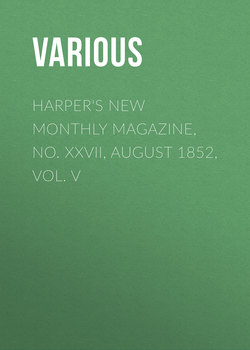Читать книгу Harper's New Monthly Magazine, No. XXVII, August 1852, Vol. V - Various - Страница 24
MEMOIRS OF THE HOLY LAND
SETTLEMENT OF THE DISPUTE
ОглавлениеThe Archbishop of Sicily, after a long hearing of the parties to this dispute, refused to interpose, and finally the case was carried by the Carmelites to Rome, and laid before a certain board of the Roman church called the College of Rites, a sort of tribunal having jurisdiction of all questions of this nature that might arise in the Catholic church, and assume sufficient importance to come before them. Here the Carmelites brought forward their cause, and offered their complaints in language more earnest than ever. They represented in very strong terms the deep dishonor which the Basilians were inflicting upon them in publicly exhibiting the prophet Elijah – the patriarch and the father of their order – dressed in a cloak, and wearing a red cap upon his head, as if he were a Turkish pashaw. To give force and emphasis to their plea they exhibited to the sacred college before whom the cause was to be tried, a representation of the picture, colored like the original, in order that the judges might see for themselves how flagrant was the wrong which they endured, and how much cause they had to complain. After many long and patient hearings of the case before the college, and many fruitless attempts to find some mode satisfactory to all parties, for settling the dispute, the college finally decided upon a middle course, a sort of forced compromise which gave the victory to neither party. The costume of the painting was ordered to be changed. The cap was to be taken away from the head, and the sandals from the feet, and the red cloak was to be replaced by one of a saffron color. The tunic of skin was to be retained, and it was to be bound about the waist with a leathern girdle. A new picture was accordingly painted in accordance with this decision, as represented in the above engraving. The controversy occupied ten years; it gave rise to protracted and voluminous proceedings, and embroiled a great number of partisans among all ranks and orders of the church: and by comparing the two engravings the reader will see at a glance the amount of the difference about which the combatants were contending. It might excite surprise in our minds that a large section of the Christian church could thus be engaged for ten years in an earnest, expensive, and bitter controversy about the costume of a painting, were it not that we sometimes see examples at the present day, of disputes equally earnest and protracted, about points smaller and more shadowy still. It ought, however, in strict justice to be said that the real questions at issue in disputes about religious rites and forms, are not usually as insignificant as they seem. Within and beyond the outward symbol there usually lies some principle of religious faith, which is, after all, the real object of the controversy. In this case, for example, the comparative claims to antiquity and pre-eminence on the part of two powerful religious orders constituted the real question at issue. The costume of the painting formed only the accidental battle ground, as it were, on which the war was waged. It is thus with a great many religious controversies, where at first view it would seem that the point at issue is wholly inadequate to account for the degree of interest taken in the dispute. The explanation is that the apparent question is not the real one. The outward aspect of the contest seems to indicate that the combatants are merely disputing about a form, while they are really contending for a principle that lies concealed beneath it. They are like soldiers at a siege, who fight on outer walls, in themselves worthless, to defend homes and fire-sides that are concealed within, entirely out of view.
